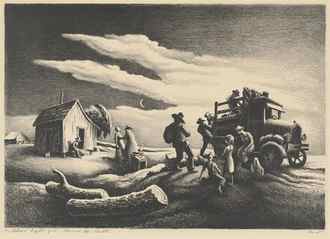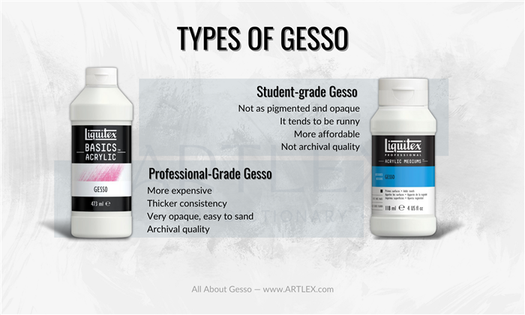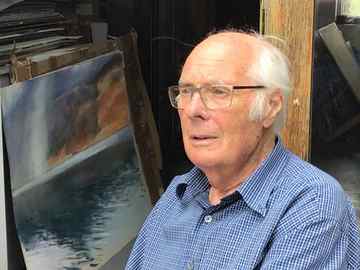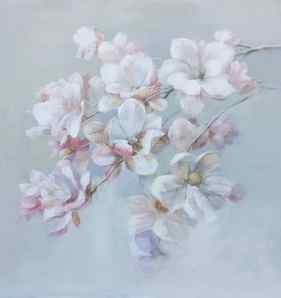Hartwell Memorial Window
Purchased with funds provided by the Antiquarian Society, the Chauncey and Marion Deering McCormick Family Foundation, and Ann and Samuel M. Mencoff; through prior gift of the George F. Harding Collection; Roger and J. Peter McCormick Endowment Fund; American Art Sales Proceeds, Discretionary, and Purchase funds; Jane and Morris Weeden Endowment Fund; Mary Swissler Oldberg Fund; purchased with funds provided by the Davee Foundation, Pamela R. Conant in memory of Louis John Conant, Stephanie Field Harris, the Komarek-Hyde-Soskin Foundation, and Jane Woldenberg; gifts in memory of John H. Bryan, Jr.; Wesley M. Dixon, Jr. Endowment Fund; through prior gift of the Friends of American Art Collection and Mr. and Mrs. Martin A. Ryerson; purchased with funds provided by Jamee J. and Marshall Field, Roxelyn and Richard Pepper, and an anonymous donor; Goodman Endowment Fund; purchased with funds provided by Abbie Helene Roth in memory of Sandra Gladstone Roth, Henry and Gilda Buchbinder Family in memory of John H. Bryan, Jr., Suzanne Hammond and Richard Leftwich, Maureen Tokar in memory of Edward Tokar, Bonnie and Frank X. Henke, III, Erica C. Meyer, Joseph P. Gromacki in memory of John H. Bryan, Jr., Louise Ingersoll Tausché, Mrs. Robert O. Levitt, Christopher and Sara Pfaff, Charles L. and Patricia A. Swisher, Abby and Don Funk, Kim and Andy Stephens, and Dorothy J. Vance; B. F. Ferguson Fund; Jay W. McGreevy, Dr. Julian Archie, Mr. and Mrs. John W. Puth, and Kate S. Buckingham endowment funds
2018.121
Extended information about this artwork
Publication History
- The New Edifice of the Central Baptist Church (Providence, RI: The Central Baptist Church, May 1916), n.p.
- “Central Baptist to Have Opening Services To-night,” Providence Evening Bulletin, Apr. 11, 1917.
- “Central Baptist Church Dedicated by Formal Rites,” Providence Journal [morning edition], Apr. 16, 1917.
- “Central Baptist Church Dedicated,” Providence Journal [evening edition], Apr. 16, 1917.
- The Central Baptist Church (Providence, RI: The Central Baptist Church, 1926), 18–19 (ill.).
- Alastair Duncan, Tiffany Windows (New York: Simon & Schuster, 1980), 86, 222, pl. 68 (ill.), as Hartwell Memorial, Landscape.
- Paul Norton, Rhode Island Stained Glass (Durham, NH: William L. Bauhan, 2001), 97.
- Elizabeth McGoey, “Tiffany to Shine at the Art Institute Starting This Fall,” The Art Institute of Chicago, last modified Feb. 11, 2020, https://artic.edu/articles/800/tiffany-to-shine-at-the-art-institute-starting-this-fall, (ill.).
- “Art Institute of Chicago Acquires Monumental Tiffany Stained Glass Window,” The Art Institute of Chicago, last modified Feb. 12, 2020, https://artic.edu/press/press-releases/286/art-institute-of-chicago-acquires-monumental-tiffany-stained-glass-window, (ill.).
- Steve Johnson, “Art Institute acquires huge Tiffany stained glass window,” Chicago Tribune, last modified Feb. 12, 2020, https://chicagotribune.com/entertainment/museums/ct-ent-art-institute-acquires-tiffany-church-window-0213-20200212-fuwgkrxd2fhlznqgilrclxx4vm-story.html, (ill.).
- “Art Institute Acquires Rare Tiffany Landscape Window,” CBS Chicago, last modified Feb. 12, 2020, https://chicago.cbslocal.com/2020/02/12/art-institute-chicago-tiffany-landscape-window, (ill.).
- Didier Rykner, “Un vitrail Tiffany pour l’Art Institute de Chicago,” La Tribune de l’Art, last modified Feb. 12, 2020, https://latribunedelart.com/un-vitrail-tiffany-pour-l-art-institute-de-chicago, (ill.).
- “Art Institute Acquires Tiffany Window to Install Atop Grand Staircase,” Chicago Gallery News, last modified Feb. 12, 2020, https://chicagogallerynews.com/news/2020/2/art-institute-acquires-tiffany-window-to-install-atop-grand-staircase, (ill.).
- Stefano Esposito, “‘Breathtaking’ Tiffany Studios window to be unveiled later this year at the Art Institute of Chicago,” Chicago Sun Times, last modified Feb. 13, 2020, https://chicago.suntimes.com/entertainment-and-culture/2020/2/13/21136050/art-institute-chicago-tiffany-window-providence-rhode-island-church, (ill.).
- “Art Institute of Chicago acquires monumental Tiffany stained glass window,” ArtDaily, last modified Feb. 14, 2020, https://artdaily.cc/news/120930/Art-Institute-of-Chicago-acquires-monumental-Tiffany-stained-glass-window, (ill.).
- Donita Naylor, “Tiffany church window, unnoticed in Providence, will be a star attraction in Chicago art museum,” Providence Journal, last modified Feb. 21, 2020, https://providencejournal.com/news/20200221/tiffany-church-window-unnoticed-in-providence-will-be-star-attraction-in-chicago-art-museum, (ill.).
- “Acquisitions of the Month: February 2020,” Apollo, last modified Mar. 10, 2020, https://apollo-magazine.com/acquisitions-of-the-month-february-2020, (ill.).
- Nancy Kenney, “‘A resting time for the art’: with museums shut, US conservators seize on strategies to safeguard their collections,” The Art Newspaper, last modified May 25, 2020, https://theartnewspaper.com/news/a-resting-time-for-the-art-with-museums-shuttered-us-conservators-seize-on-strategies-to-safeguard-their-collections, (ill.).
- Elizabeth McGoey, “Breaking Ground for a Landscape in Light,” The Art Institute of Chicago, last modified Mar. 4, 2021, https://artic.edu/articles/903/breaking-ground-for-a-landscape-in-light, (ill.).
- Ted Loos, “Museum Shows with Stories to Tell,” The New York Times, last modified May 21, 2021, https://www.nytimes.com/2021/05/21/arts/museum-listings.html.
- Kyle MacMillan, “Art Institute of Chicago’s Tiffany Window a Monumental Aquisition,” Chicago Sun-Times, last modified May 25, 2021, https://chicago.suntimes.com/2021/5/25/22453083/art-institute-chicago-tiffany-hartwell-window-stained-glass, (ill.).
- Nora McGreevy, “Stunning Tiffany Stained Glass Debuts After 100 Years of Obscurity,” Smithsonian Magazine, last modified May 28, 2021, https://www.smithsonianmag.com/smart-news/after-100-years-obscurity-brilliant-tiffany-stained-glass-window-shine-chicago-180977850, (ill.).
- Marc Vitali, “Landscape Made of Light and Glass Joins Permanent Collection at Art Institute,” WTTW, last modified June 2, 2021, https://news.wttw.com/2021/06/02/landscape-made-light-and-glass-joins-permanent-collection-art-institute, (ill.).
- Bobby Tanzilo, “Urban Spelunking: Plymouth Church OCC’s Nine Tiffany Windows,” OnMilwaukee, last modified May 3, 2022, https://onmilwaukee.com/articles/plymouth-tiffany-windows.
Provenance
Commissioned by Mary Loring Hartwell (born Mary Loring Hartshorn, 1851–1949), Providence, RI, in honor of her husband Frederick W. Hartwell (1850–1911), for the Central Baptist Church (now Community Church of Providence), Providence, RI, 1917; sold to the Art Institute of Chicago, 2018.
Object information is a work in progress and may be updated as new research findings emerge. To help improve this record, please email . Information about image downloads and licensing is available here.
Uncovering America
George Biddle, “An Art Renascence Under Federal Patronage,” Scribner’s, March 1934, 428–431.
Catlin’s Indian Cartoons, The Univeristy of California
John Dewey, Art as Experience (New York, c. 1934)
Francis O’Connor, Art for the Millions: Essays from the 1930s by Artists and Administrators of the WPA Federal Art Project (New York, 1975)
Art and the Great Depression
“Art in America has always belonged to the people and has never been the property of an academy or a class. . . . The Federal Art Project of the Works Progress Administration is a practical relief project which also emphasizes the best tradition of the democratic spirit. The WPA artist, in rendering his own impression of things, speaks also for the spirit of his fellow countrymen everywhere. I think the WPA artist exemplifies with great force the essential place which the arts have in a democratic society such as ours.”


Thomas Hart Benton, Twentieth-Century Fox Film Corporation, Departure of the Joads, 1939, lithograph in black on wove paper, Reba and Dave Williams Collection, Florian Carr Fund and Gift of the Print Research Foundation, 2008.115.14
Does art “work” or have a purpose? How?
Is making art a form of work? Make your argument for why or why not.
Franklin Delano Roosevelt stated that art in America has never been the sole province of a select group or class of people. Do you agree or disagree?
Define what you think Roosevelt meant by “the democratic spirit.” How do you think art can represent democratic values?
The Great Depression spanned the years 1929 to about 1939, a period of economic crisis in the United States and around the world. High stock prices out of sync with production and consumer demand for goods caused a market bubble that burst on October 24, 1929, the famous “Black Thursday” stock market crash. The severity of the market contraction affected Americans across the country. The most visible effects included widespread unemployment, homelessness, and a marked decrease in Americans’ standard of living. In addition, a severe drought produced the Dust Bowl—a series of damaging dust storms. This environmental disaster ruined many farmers during a period when the economy was largely agricultural.
In office at the time of the crash, President Herbert Hoover (term 1929–1933) was unable to stop the free fall of the American economy. His successor, Franklin Delano Roosevelt, was elected president in a landslide in 1933 with campaign promises to fix the economy. Roosevelt acted quickly to create jobs and stimulate the economy through the creation of what he called “a New Deal for the forgotten man”—a program for people without resources to support themselves or their families. The New Deal was formalized as the federal Works Progress Administration (WPA), an umbrella agency for the many programs created to help Americans during the Depression, including infrastructure projects, jobs programs, and social services.
Through the WPA, artists also participated in government employment programs in every state and county in the nation. In 1935, Roosevelt created the Federal Art Project (FAP) as the agency that would administer artist employment projects, federal art commissions, and community art centers. Roosevelt saw the arts and access to them as fundamental to American life and democracy. He believed the arts fostered resilience and pride in American culture and history. The art created under the WPA offers a unique snapshot of the country, its people, and art practices of the period. There were no government-mandated requirements about the subject of the art or its style. The expectation was that the art would relate to the times, reflect the place in which it was created, and be accessible to a broad public.
Artists working in the FAP and for other WPA agencies created prints, easel paintings, drawings, and photographs. Public murals were painted for display in post offices, schools, airports, housing developments, and other government buildings. Community art centers hosted exhibitions of work made by artists employed in government programs and offered hands-on workshops, led by artists, for everyone. Illustrators made detailed drawings that cataloged the physical culture and artifacts of American daily life—clothing, tools, household items. The WPA intentionally seeded arts programs and supported artists outside of urban centers. In so doing, it introduced the arts to a much more diverse swath of Americans, many of whom had previously never seen an original painting or work of art, had not met a professional artist, nor experimented with art making.



